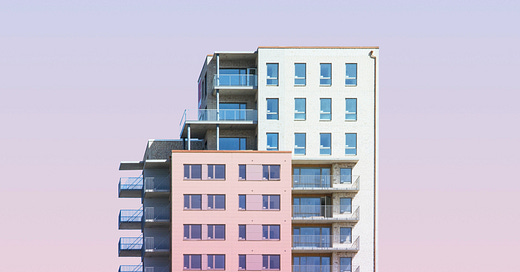In defense of big luxury apartment buildings
As college students enter "find housing for next year" season
Recently, a friend of mine mentioned to me how he is saddened by the gentrification on South U. That street has seen notable development in the years in which he attended the University of Michigan and lived in Ann Arbor, but I was confused as to how exactly that was gentrification – and if it was gentrification – what makes it so bad. The new luxury apartment buildings definitely change the “character” of South U, but beyond that, what else do they do? “Gentrification” isn’t bad because it updates the facades of buildings or adds height to buildings lining the streets; it is bad because of the displacement that it brings. At the root, a neighborhood’s character consists of the people occupying it - force those people out and you’ve made a mistake. None of the infrequent 100+ unit developments dotting campus constitute gentrification – in fact, almost none of the new student-oriented housing developments around Ann Arbor displace the present communities in favor of making the area more “becoming” for middle-upper class tastes.
Often, people see large new developments – especially those in the “modern” style frequently used in the past decade – as “gentrifying.” The line of thought is simple, and one I ascribed to for a long time. The thinking is that these large, expensive-to-rent apartments surely drove up the price of housing in the surrounding city and had a negative impact on the community. It is true that increases in the cost of rent easily outpaced inflation in the past years in the city as well, however this analysis, especially in the city of Ann Arbor, overlooks the actual problem: there simply are not enough places to live. Not only that, but the lack of renter protections in the city make it much easier for some people to rent than others – and much easier for landlords to make money.
The reason why the luxury apartments being built on South U or elsewhere are good is because they strike at the root cause of the housing crisis in Ann Arbor. To put it simply, Ann Arbor is facing an extreme shortage of housing, and nothing can solve the problem except a radical increase in the amount of units being built, regardless of their designation as “luxury” or “non-luxury”. In reality, the luxury designation is mostly meaningless, due to the fact that any developer building in a high cost area will market their product as luxurious. Ann Arbor’s student occupancy rate has far exceeded that of the full US, fluctuating between 98-99% while the national average rests around 95%. The connection is clear – as the number of students grows, the amount of housing they are consuming will grow as well. In 2019, Ann Arbor experienced an overall decrease of 72 beds per student, even as the city experienced the largest increase in private market student-only housing in recent years. In 2015, a HUD report stated that demand far exceeded 3-year projected supply in the Ann Arbor metro and that the vacancy rate has dropped over four points to 3.3% since 2010.
Ann Arbor needs these new buildings to continue to survive, otherwise it will choke itself in a march to protect so-called “neighborhood character.” The housing crisis in Ann Arbor is dire, and even with the small strides that have been made via dense housing in the heavily built areas of the city, there is still a long distance to go.
Unfortunately, Ann Arbor’s housing stock growth trails other college towns, our rent prices race ahead of other college towns, our vacancy rates plummet and our occupancy rates skyrocket. The ability of the housing shortage to drive up prices, make no mistake, is in part caused by the strange alliance formed between landlords and the University’s wealthy student population. Weak renter laws, like the 70 day early lease ordinance (In August 2021, this ordinance was amdended to 150 days. This article was written before that, although it was published later), empower students with rental assistance from their parents or elsewhere to limit supply far before they occupy those apartments – to the benefit of no one, except landlords. Another massive culprit to the problem of the housing affordability in the city is Ann Arbor’s extremely large amount of land zoned for single family housing. Zachary Ackerman, former City Councilman for Ward 5, made the (true) argument that much of this zoning is based in racism of eras past – racism by people who may very well still live here! He mentions a 70s news article containing blatant racism, such as voters who opposed small lot sizes because they “would be too expensive for Negroes to purchase.” With the average age of housing in Ann Arbor now reaching fifty years of age, is it a shock that the rules of yesterday stifle the growth and diversity of today?
Ann Arbor needs these large housing developments – they aren’t gentrifying South U or Huron or any of the other streets that are are being built on. Ann Arbor is an expensive city, and these apartments are simply matching the demand. Just straying a mile off campus demonstrates how radically we need to rethink housing. The real culprit is the people who remain defiant in their support of single-family zoning that keeps supply limited and housing expensive. To pursue a greater, more equitable, more diverse Ann Arbor, we need to take into consideration multiple facets, including renter protections and rent control, but most importantly the need to build more housing in the city we all know and love. Until then, we have the big luxury apartment buildings.
Photo by Simone Hutsch on Unsplash




Unfortunately the majority of blue collar people who make the University " Go Blue " cannot afford to rent or purchase homes in the city they work in.